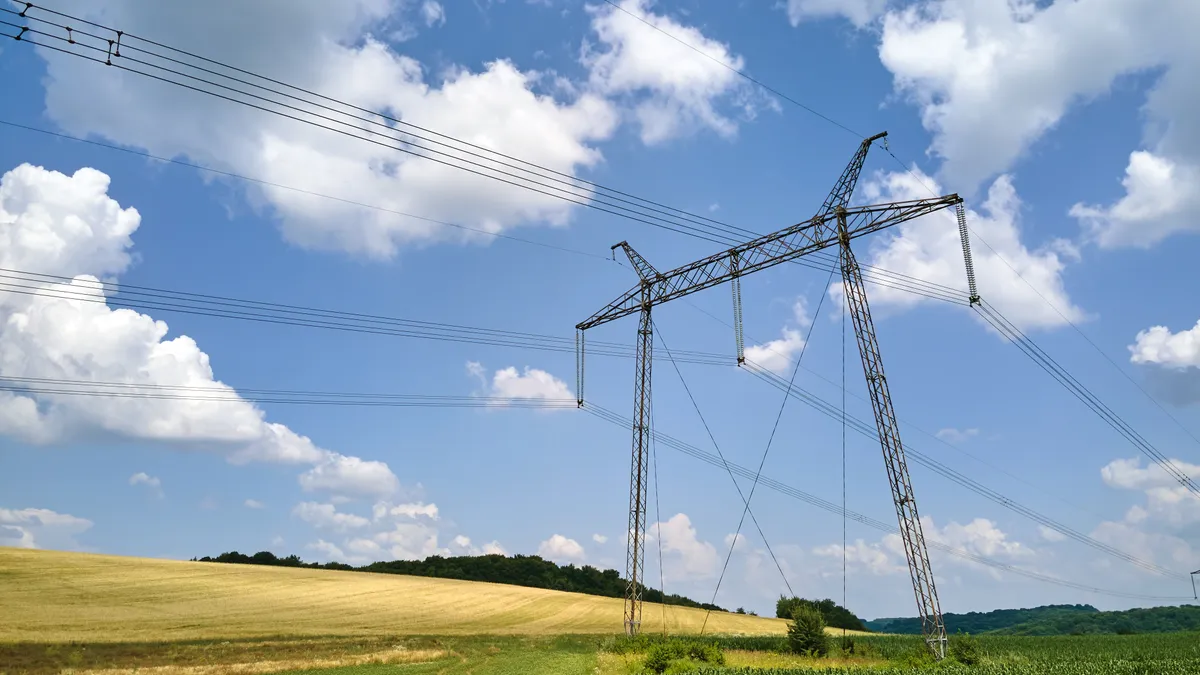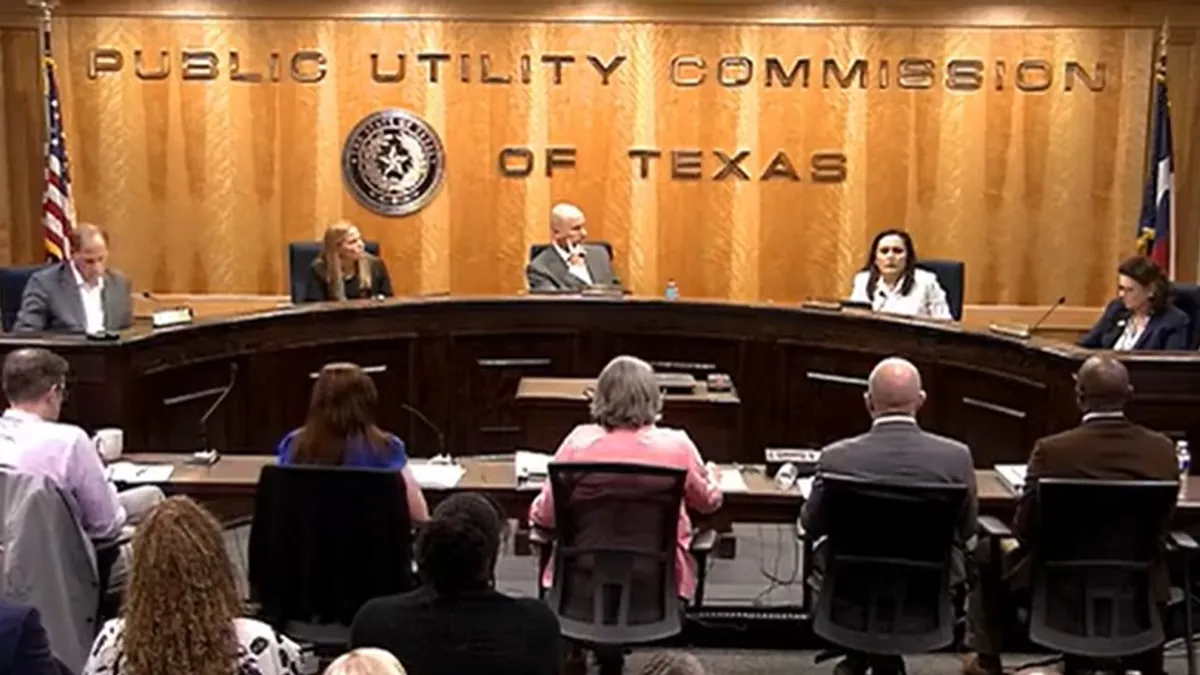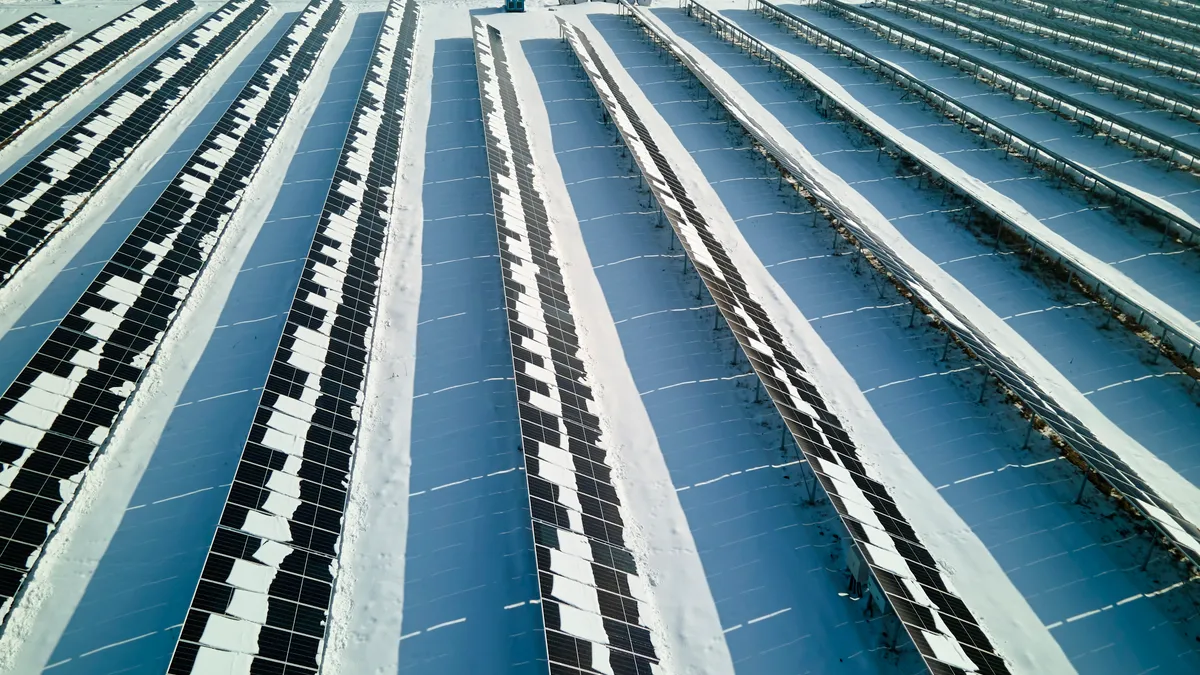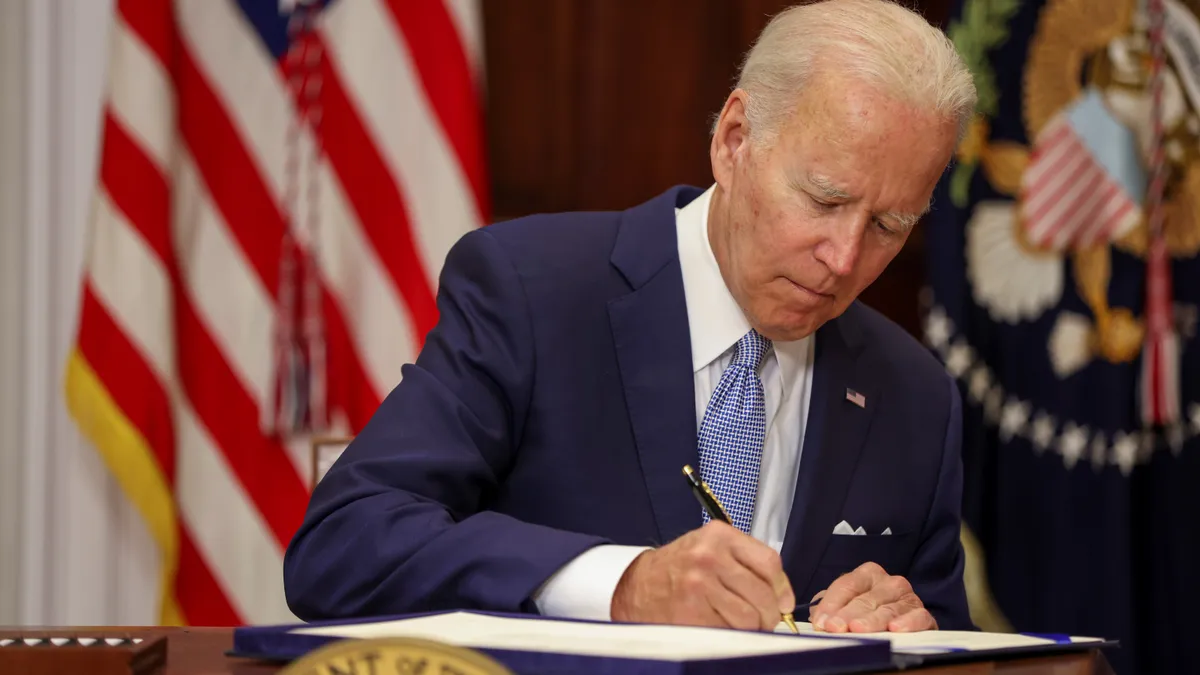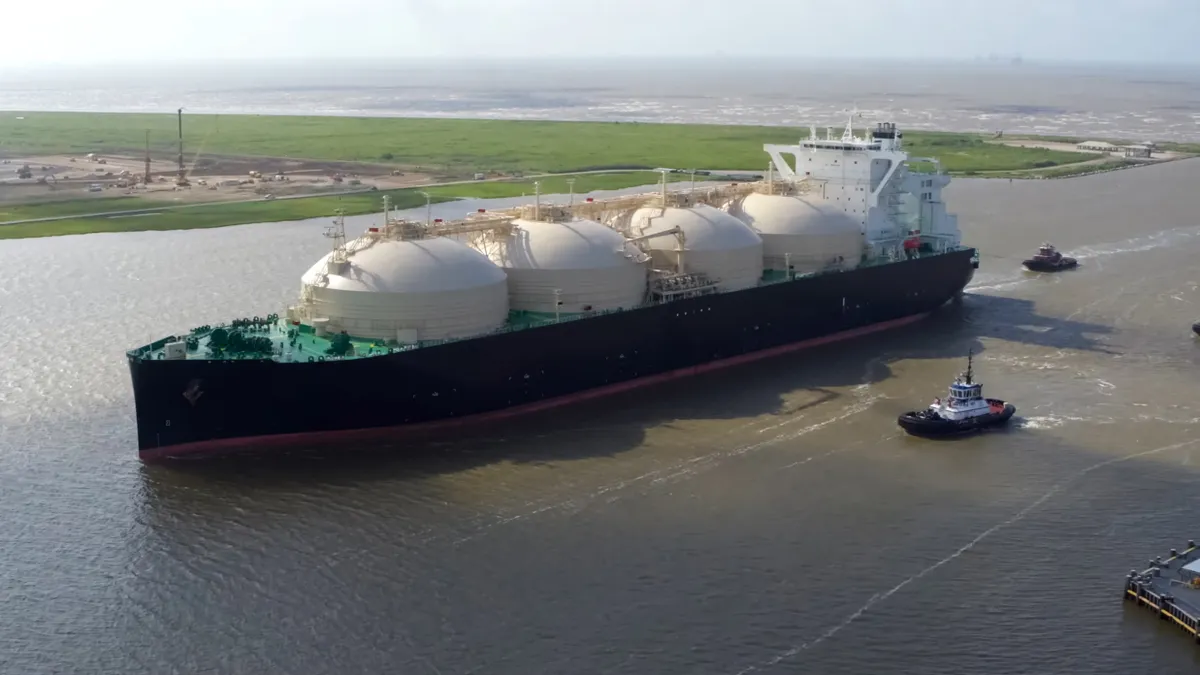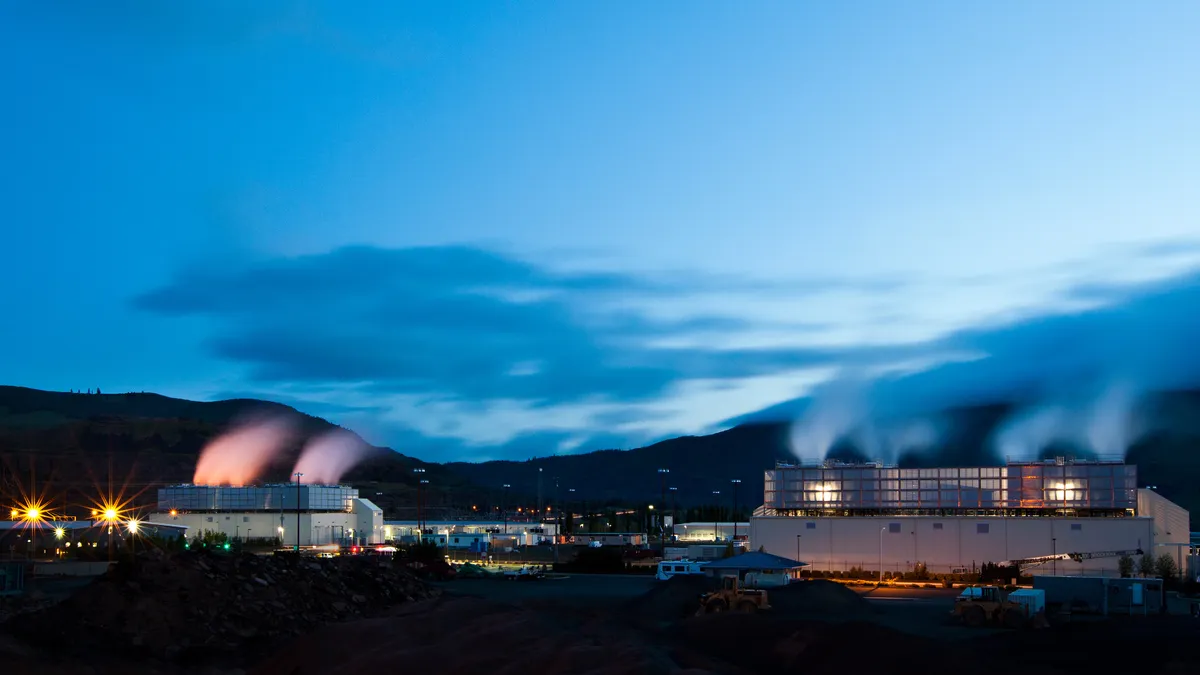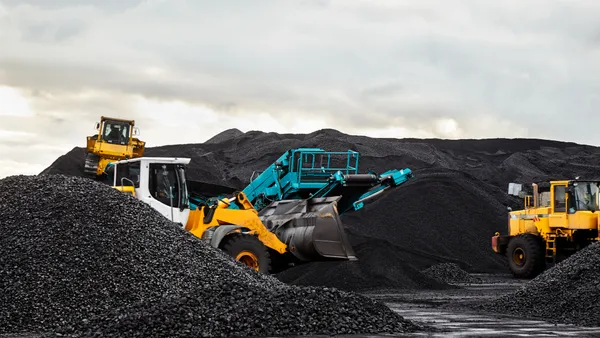The Trump administration wants to revive Yucca Mountain, the national nuclear waste repository in Nevada that was canceled by the Obama administration in 2010, but the hurdles are high, both politically and financially.
President Donald Trump’s proposed 2018 budget included $150 million in funding to revive the licensing process for Yucca Mountain, comprising $120 million for the Department of Energy to support the completion of the licensing process and $30 million for Nuclear Regulatory Commission activities related to Yucca Mountain.
On July 18, the Senate Appropriations Subcommittee on Energy and Water Development approved a $38.4 billion funding measure that included provisions for consolidated nuclear waste storage and for funding to allow the Department of Energy to store nuclear waste at private facilities licensed by the Nuclear Regulatory Commission. But the subcommittee excluded funds requested to restart the Yucca Mountain relicensing process.
The vote was quickly applauded by Rep. Dina Titus (D) from Nevada, who said, “Republicans in the House should pay attention to the Senate and revisit their efforts to fund a dangerous and misguided project that is based on bad politics and even worse science. As has been shown time and again, along with Secretary Rick Perry and the Trump Administration, they refuse to recognize our state’s opposition to this unworkable project.”
Local opposition to Yucca Mountain has always been strong, and when Harry Reid was Nevada’s senior senator and first Majority Leader and then Minority Leader of the Senate, he was able to block efforts to move Yucca Mountain forward. Reid retired in 2017, but opposition is still strong.
Nevada’s Republican and Democratic senators, Dean Heller and Catherine Cortez Masto, respectively, as well as Gov. Brian Sandoval are all opposed to restarting the licensing process for Yucca Mountain.
So far $7.5 billion has been spent on Yucca Mountain. And, as of September 2016, there was $36 billion in the nuclear waste fund created under the Nuclear Waste Policy Act, which authorized the collection of fees from rate payers to pay for transporting and storing spent nuclear fuel.
The Nuclear Waste Policy Act was passed in 1982. Yucca Mountain was selected in 1987 and was supposed to start accepting nuclear waste in 1998, but the repository never opened. The budget was zeroed out in 2010 by President Barack Obama. The Nuclear Regulatory Commission found money to finish the studies it was required to do, but the process stopped there.
Without a repository, nuclear operators have been forced to store spent fuel in pools at nuclear plant sites for decades. When the fuel cools sufficiently, usually in about five years, it is moved to dry cask storage. Virtually all of the spent fuel in the United States is now either in pools or in dry casks on site at the nuclear plant where it began its useful life.
Paying to process and store the fuel is not an expense nuclear operators were supposed to bear. It was supposed to be covered by the nuclear waste fund, but the fund can only be used for permanent geological storage of high level nuclear waste.
To cover the costs of onsite storage, nuclear operators have been suing the federal government for breach of contract. So far, there have been 70 judgments again the government, resulting in payments to nuclear operators “north of $6 billion,” said John Keeley, a spokesman for the Nuclear Energy Institute. “And the number is only going to go up.” Every year a national repository is not ready to accept spent fuel adds another $500 million to the costs.
The Department of Energy, which is responsible for the disposal of nuclear waste, estimates the government’s total liability will be $29 billion by 2022, assuming that the government starts accepting nuclear waste by then. Some estimates put the cost as high as $50 billion. The funds come from the so-called Judgment Trust, which is funded by tax payers.
“Ratepayers paid for safe, permanent storage, and now taxpayers are paying for less safe and less secure onsite storage,” says Christina Simeone, director of policy and external affairs at the Kleinman Center for Energy Policy at the University of Pennsylvania.
Essentially, Simeone said, citizens are paying twice and are still not getting a permanent solution. And in communities where nuclear plants have been closed, they have lost the tax revenue from the nuclear plant and are now hosting a nuclear waste dump on a site that cannot be used for another productive purpose.
Even if the Trump administration’s efforts are successful, it will be decades before a national repository is ready to begin accepting fuel, Keeley said.
Some railroad tracks have been laid and about five miles of tunnels have been drilled in Yucca Mountain to perform tests in what has been called “the most studied rock in the world,” but otherwise actual construction of the 42 miles of tunnels that the repository would require has not begun. The repository would also require 300 miles of new railroad tracks to move the spent fuel to Yucca Mountain. The NRC completed most of its safety evaluation studies on the site in 2015 – a prerequisite for handing the project off to the DOE – but the project was halted just as it was set to enter public hearing phase.
There are already at least 300 “contentions” lined up protesting the use of Yucca Mountain and a spent fuel repository. Those have to be heard and resolved before the project can move forward. In the near term, “litigating the contentions” is the main obstacle to getting Yucca Mountain back on tracks, says Keeley.
Some portion of the requested budget funds would go toward that effort. Staff – nuclear experts, scientists and lawyers – working on Yucca Mountain were dispersed, both at the NRC and the DOE, when work on the project stopped. Those positions would have to be filled again to move the project forward.
In an April 2017 report, the Government Accountability Office said it could take as much as one year for staff to get back up to speed and as much as five years and $330 million to resume and complete the licensing process.
Meanwhile spent fuel continues to pile up. There is already 70,000 metric tons of spent nuclear fuel stored at sites around the nation. But even if Yucca Mountain were to open tomorrow, it would already be full because the legislation enabling the repository put a 70,000 metric ton cap on how much spent fuel could be stored at the site. But 70,000 is “an artificial number,” says Jay Silberg, a partner with Pillsbury Winthrop Shaw Pittman, who has represented several utilities on nuclear energy matters. The site could actually hold 100,000 metric tons, he says.
In June a House panel passed a bill that would amend the Nuclear Waste Policy Act and allow, among other things, the elimination of the cap.
Even if the cap is raised, there would still be problems with accepting existing nuclear waste. There is a loading sequence that puts a 3,000 to 4,000 metric ton/year limit on how much spent fuel can be accepted at the repository, says Silberg.
In addition, the existing casks are too big for the repository as designed, says Dave Lochbaum, director of the nuclear safety program at the Union of Concerned Scientists. The existing casks were designed to optimize the use of resources for onsite storage. But they would emit too much heat for the currently designed configuration of the repository. That could require a staging and repackaging facility at Yucca Mountain.
The best hope is for interim storage sites that could be ready in about 10 years, says Keeley. The same House bill, HR 3053, that would raise the cap on how much spent fuel can be storage at Yucca Mountain, would also allow an interim spend nuclear fuel facility to be built and funded in advance of an NRC decision on Yucca Mountain. But in order to transport waste to the facility, the NRC would have to make a decision on Yucca Mountain or the DOE would have to determine that a decision is imminent.
There are currently applications on file at the NRC for consolidated interim spent fuel facilities In Andrews County, Texas, and in Lea County, New Mexico, that are being developed by Waste Control Specialists and Holtec International, respectively.
The interim storage measure has support from legislators in nuclear heavy states such as Illinois and California, which is closing down its nuclear plants but will still have nuclear waste to store. The bill’s lead sponsor is Rep. John Shimkus (R) of Illinois, and it has the support of Rep. Scott Peters (D) of California, who praised both the permanent and interim storage provisions of the bill.
But closer to home, the bill faces stiff opposition. Rep. Ben Ray Lujan (D) of New Mexico opposes it, arguing that the interim facilities would become de facto permanent repositories. And in a statement, Sen. Heller of Nevada said, “This legislation is dead on arrival in the Senate.”
As complex as nuclear fuel storage is, the issue is not so much the technical problems. “The science works,” Lochbaum says. “The problem is the political science.”




